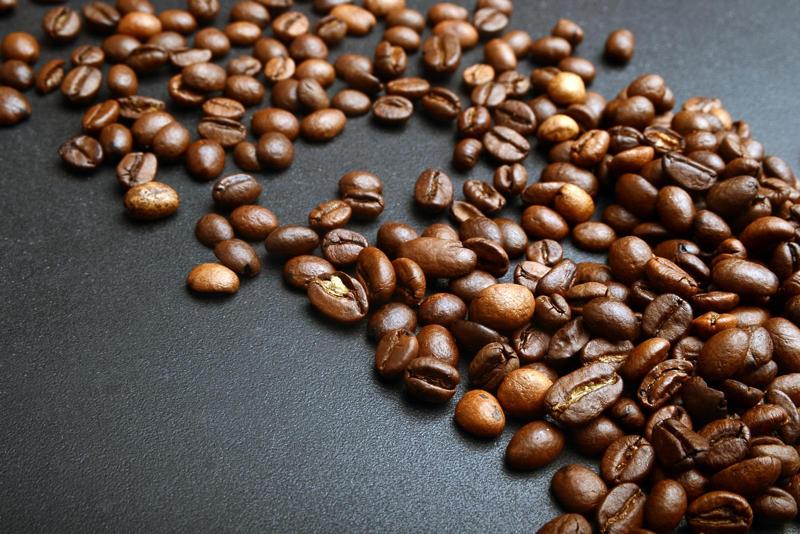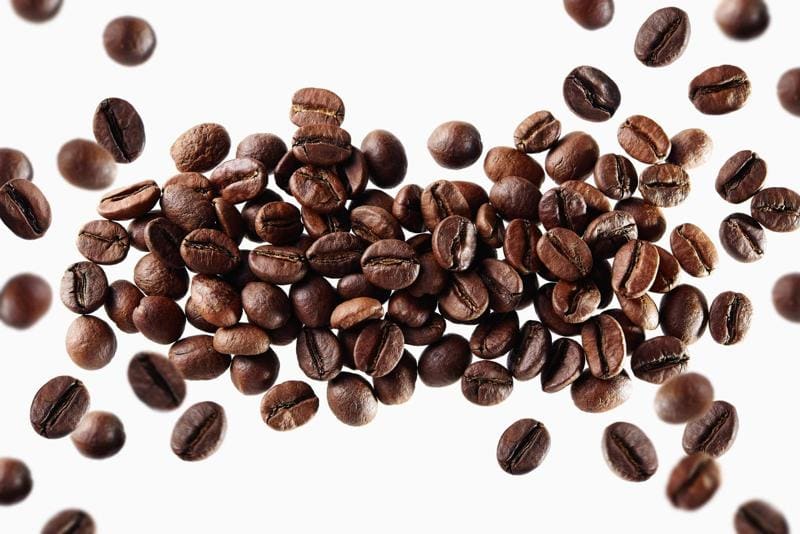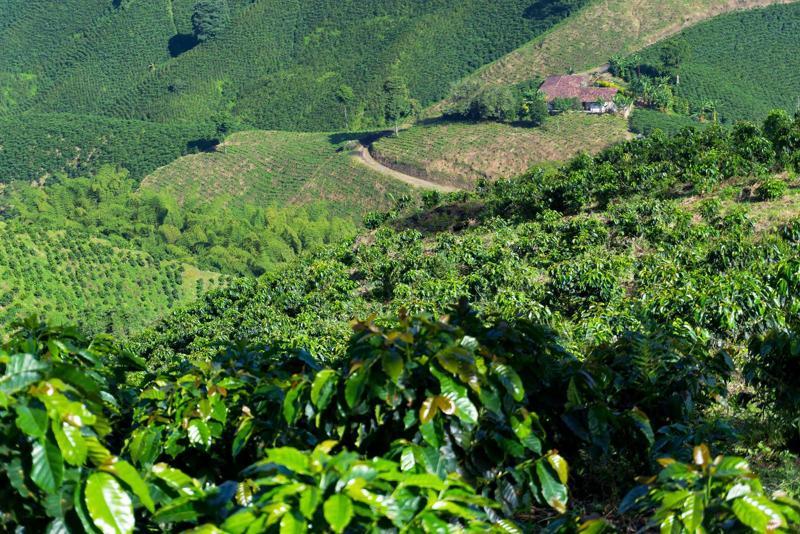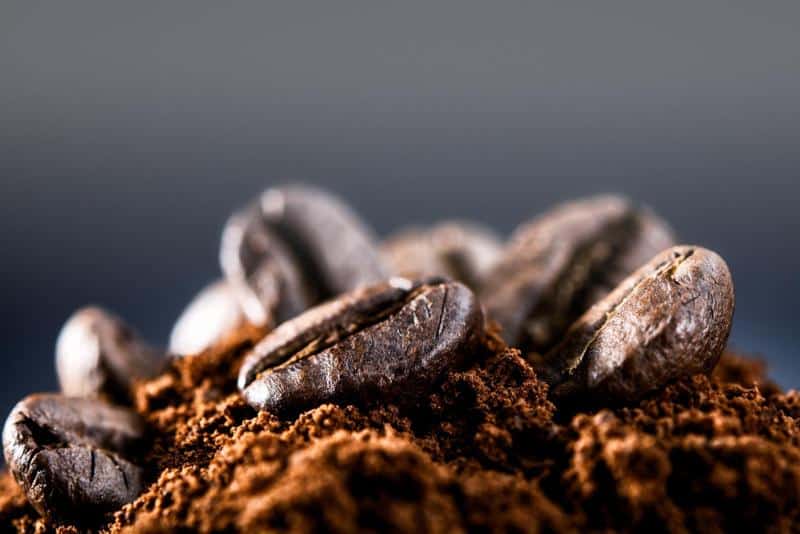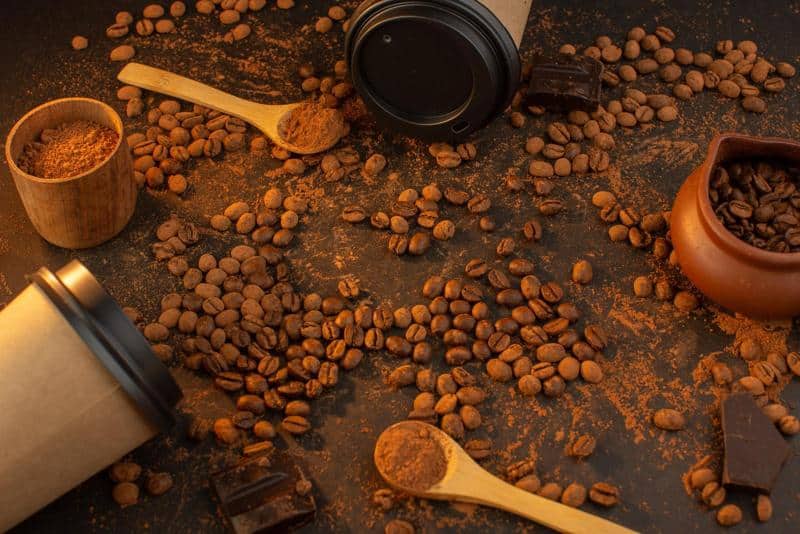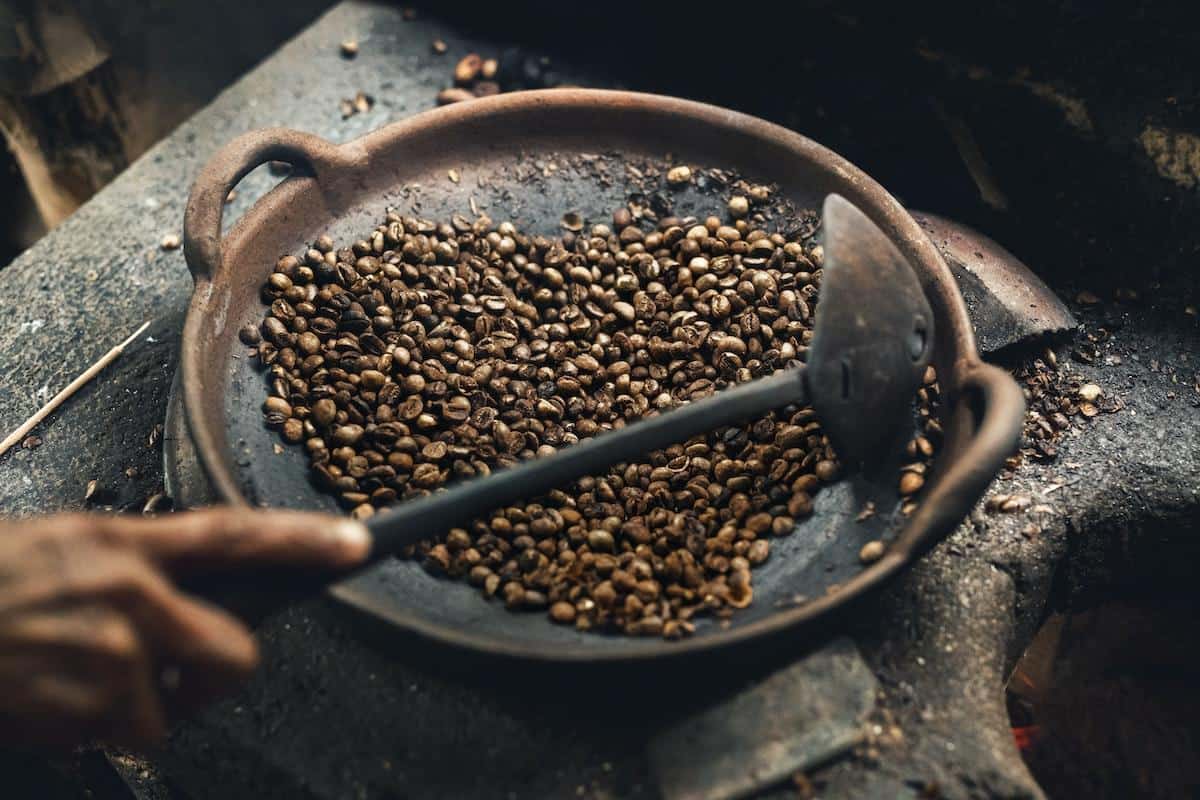Coffee enthusiasts and connoisseurs alike are constantly searching for that perfect cup of joe. They crave a coffee experience that is unparalleled in flavor, aroma, and overall quality. This is where air roasted coffee enters the scene, offering a brewing method that takes the taste of coffee to new heights.
Air roasted coffee is not your ordinary cup of joe. It is a brewing technique that unveils the true potential hidden within every bean, resulting in an extraordinary flavor profile and aroma. But what exactly is air roasted coffee? How does it differ from traditional roasting methods? And why does it reign supreme?
In this article, we will delve into the world of air roasted coffee, unraveling the key process behind its unique flavor and exploring the science behind it. We will also learn about the advantages it offers over traditional roasting methods and uncover some techniques to brew the perfect cup at home.
Prepare to embark on a journey that will forever change your perception of what makes a great cup of coffee. Whether you are a seasoned enthusiast or simply curious about exploring new flavors, this article will guide you through everything you need to know about air roasted coffee. Get ready to discover the magic that lies within each and every bean.
What is Air Roasted Coffee
Air roasting is a unique process that involves using hot air to roast coffee beans, rather than traditional drum or pan roasting methods. The key process behind air roasting involves the use of high-velocity hot air to agitate and circulate the beans, resulting in a more even and consistent roast.
During air roasting, the coffee beans are placed in a specially designed chamber where they are exposed to a stream of hot air. As the beans are stirred and tossed around by the air flow, they undergo a series of chemical reactions that transform their flavors and aromas. This gentle agitation ensures that all sides of the beans are evenly roasted, leading to a more uniform and balanced end result.
One of the main advantages of air roasting is its ability to create truly exceptional flavor profiles in the coffee. Because air roasting allows for precise control over temperature and airflow, it is possible to achieve a wide range of flavors, from bright and fruity to rich and chocolatey. Furthermore, since there is no direct contact between the beans and surfaces such as drums or pans, there is less chance of any unwanted flavors being imparted onto the coffee.
Overall, air roasted coffee offers an unrivaled taste experience due to its precise control over heat circulation and agitation. This method ensures that each bean receives equal exposure to heat, resulting in a consistently flavorful cup of coffee. Additionally, because air roasting minimizes the risk of burnt or unevenly roasted beans, it eliminates any bitter or sour notes that can often be present in traditionally roasted coffees.
| Advantages | Description |
|---|---|
| Enhanced Flavor | Air roasting allows for precise control over temperature and airflow, resulting in a wide range of flavors. |
| Consistency | Each bean receives equal exposure to heat, ensuring a consistently flavorful cup of coffee. |
| No Unwanted Flavors | Because there is no direct contact with surfaces like drums or pans, unwanted flavors are minimized. |
Advantages of Air Roasting
Air roasting is a coffee roasting technique that has gained popularity among coffee enthusiasts for its numerous advantages. One of the main advantages of air roasting is its ability to produce unmatched flavor and aroma in the coffee beans.
Enhanced Flavor
When coffee beans are air roasted, they are exposed to hot air, which evenly circulates around them. This allows for a more uniform and controlled roast, resulting in enhanced flavor profiles. The hot air quickly removes moisture from the beans, allowing them to develop their natural sugars and oils. As a result, air roasted coffee tends to have a cleaner, brighter taste with well-balanced acidity.
Aroma Preservation
The air roasting process also helps to preserve the natural aromas of the coffee beans. Unlike other roasting methods where direct contact with heated surfaces may lead to loss of aromatic compounds, air roasting ensures that the volatile aromatics are retained in the beans. This means that when brewing air roasted coffee, you can expect an enticing aroma that fills your senses and enhances your overall coffee drinking experience.
Consistency
Another advantage of air roasting is its consistency in producing high-quality coffee. With traditional drum roasting methods, it can be challenging to achieve consistent results as heat distribution may vary within the drum, leading to uneven roasts.
In contrast, air roasters provide excellent control over temperature and airflow throughout the entire roast duration. This consistency allows for precise customization of roast levels and ensures that each batch of air roasted coffee delivers consistent quality in terms of flavor and aroma.
The Science Behind Air Roasting
Air roasting is not just about the unique flavor and aroma that it produces, but also about the science behind the process. In this section, we will delve into the inner workings of air roasting and explore how heat circulation enhances the coffee experience.
The Basics of Air Roasting
At its core, air roasting involves using hot air to roast coffee beans evenly. Unlike traditional drum roasting methods where beans are roasted in a rotating drum, air roasting utilizes a fluidized bed system. This means that a stream of hot air is circulated through the beans to roast them from all sides simultaneously.
Heat Circulation: The Key to Consistency
One of the advantages of air roasting is its ability to provide consistent heat distribution throughout the entire roasting process. With traditional drum roasters, there can be variations in temperature due to uneven heat distribution. In contrast, air roasters ensure that every bean receives uniform exposure to heat by circulating heated air around them.
Enhancing Flavor and Aroma
The even heat distribution in air roasting plays a crucial role in enhancing both flavor and aroma. The consistent temperature allows for better development of complex flavors and aromas in the coffee beans. This results in a more balanced cup that showcases the unique characteristics of each bean.
Furthermore, because there is no direct contact between the beans and any surfaces during air roasting, undesirable flavors or odors from oils or residue on the surface of traditional rotary drums are eliminated. As a result, air roasted coffee tends to have cleaner flavors and a smoother finish compared to other methods.
Beyond Ordinary
In the world of coffee connoisseurs, air roasted coffee is often hailed for its ability to deliver unique taste profiles that go beyond the ordinary. This method of roasting coffee beans allows for a wide range of flavors to be developed, creating a truly exceptional coffee experience.
One of the key advantages of air roasted coffee is its ability to bring out distinct flavors and aromas that other roasting methods may not achieve. The hot air circulation during the roasting process ensures an even distribution of heat, resulting in a more consistent roast and flavor profile. This means that each cup of air roasted coffee can offer a delightful array of tasting notes, from nutty and chocolatey to fruity and floral.
To fully appreciate the unique taste profiles of air roasted coffee, it is important to explore different varieties and origins. Coffees from different regions around the world bring their own distinct characteristics to the cup. For example, African coffees are often known for their bright acidity and fruity flavors, while South American coffees tend to have a well-balanced profile with hints of chocolate and caramel.
To truly unlock the full potential of these unique taste profiles, it is essential to use proper brewing techniques. Brewing methods such as pour over, French press, or espresso can highlight different aspects of the flavor profile. Experimenting with grind size, water temperature, and brew time can also yield surprising results by accentuating specific flavor notes in your cup.
Whether you prefer a medium roast with floral undertones or a dark roast with rich chocolaty flavors, air roasted coffee offers an exploration into a world of taste experiences. By embracing this revolution in coffee roasting, you can elevate your morning routine or afternoon pick-me-up with a truly extraordinary cup of java.
The Ultimate Brewing Techniques
Air roasting is a brewing technique that has gained popularity among coffee enthusiasts for its ability to unlock the full potential of coffee beans. By understanding and implementing the ultimate brewing techniques for air roasted coffee, you can experience a truly remarkable and flavorful cup of joe.
One key technique to master when brewing air roasted coffee is controlling the water temperature. The ideal water temperature for brewing air roasted coffee is between 195-205 degrees Fahrenheit (90-96 degrees Celsius). This ensures that the flavors are properly extracted from the beans without being over-extracted or under-extracted. To achieve this, it is recommended to use a digital kettle with adjustable temperature settings or a thermometer to monitor the water temperature accurately.
Another important aspect of brewing air roasted coffee is finding the right grind size. The grind size affects how quickly and evenly the flavors are extracted from the beans. For air roasted coffee, a medium-coarse grind is generally recommended. This allows for optimal extraction without resulting in bitter or weak flavors. Investing in a quality burr grinder will help you achieve a consistent and uniform grind size for your air roasted beans.
Lastly, the brew time and ratio play a crucial role in unlocking the full potential of air roasted coffee. It is recommended to follow a brew ratio of 1:16, which means using 1 part coffee to 16 parts water. Experimenting with different brew times can also enhance your brewing experience. Generally, a brew time between 4-5 minutes is suitable for air roasted coffee, but you can adjust this according to your personal preference.
By mastering these ultimate brewing techniques for air roasted coffee, you can fully enjoy its unique flavors and aromas. Remember to always start with high-quality air roasted coffee beans and experiment with different brewing variables until you find your perfect cup. Embrace the revolution of air roasted coffee and elevate your caffeine experience like never before.
| Ultimate Brewing Techniques for Air Roasted Coffee | Recommendations |
|---|---|
| Water Temperature | 195-205 degrees Fahrenheit (90-96 degrees Celsius) |
| Grind Size | Medium-coarse |
| Brew Ratio | 1:16 (1 part coffee to 16 parts water) |
Sourcing and Selecting Air Roasted Coffee Beans
The Search for Quality
When it comes to sourcing and selecting air roasted coffee beans, quality is paramount. The journey of finding the perfect beans begins with dedicated farmers who prioritize cultivating high-quality coffee in sustainable and ethical ways. These farmers often work hand-in-hand with expert roasters who understand the intricacies of air roasting and the specific requirements it demands.
The search for quality also involves considering the origin of the beans. Different regions around the world produce distinct flavors and characteristics in their coffee. For example, beans from Ethiopia may have floral or fruity notes, while beans from Colombia may be more balanced and chocolaty. Sourcing from various origins allows coffee enthusiasts to explore a wide range of flavor profiles unique to air roasted coffee.
Embracing Sustainability
In recent years, there has been a growing demand for sustainably sourced coffee. This includes consideration of environmental impact, fair pricing for farmers, and investing in local communities. When selecting air roasted coffee beans, it’s important to look for certifications such as Fair Trade or Rainforest Alliance that ensure ethical practices in the supply chain.
Additionally, some brands go beyond sustainability by focusing on regenerative farming practices. These practices aim to restore ecosystems and improve biodiversity while mitigating climate change. By supporting these brands, consumers not only enjoy exceptional coffee but also contribute to a more sustainable future.
Taste Testing and Selection Process
Another crucial aspect of sourcing and selecting air roasted coffee beans is conducting taste tests to ensure quality and flavor consistency. Expert tasters evaluate each batch of beans based on factors like aroma, acidity, body, and aftertaste. They seek out specific characteristics that are enhanced by the air roasting process, such as vibrant flavors and pronounced aromas.
Roasters also pay close attention to ensuring consistency in their offerings. Each batch of beans must meet strict standards set by the brand to maintain the desired flavor profile. This meticulous selection process guarantees that every cup of air roasted coffee delivers an exceptional and consistent experience for the consumer.
By understanding the journey of quality and sustainability behind sourcing and selecting air roasted coffee beans, coffee enthusiasts can fully appreciate the depth and complexity of this brewing method. From working closely with farmers to conducting taste tests, the quest for the perfect beans results in a truly remarkable cup of coffee.
Air Roasted Coffee vs. Traditional Roasting Methods
When it comes to roasting coffee beans, there are various methods that have been used for centuries. However, in recent years, air roasting has gained popularity among coffee connoisseurs and for good reason. In this section, we will explore the key differences between air roasted coffee and traditional roasting methods, and why air roasted coffee reigns supreme.
One of the main advantages of air roasting is the even and consistent distribution of heat throughout the roasting process. Unlike traditional drum roasters where the beans come into direct contact with a hot surface, air roasters use hot air to roast the beans.
This gentle and precise method ensures that each bean is uniformly roasted, resulting in a more consistent flavor profile. Additionally, because there is no direct contact with a heated surface, there is less risk of scorching or burning the beans.
Another major advantage of air roasted coffee is its ability to preserve the natural flavors and aromas of the beans. Traditional drum roasters often apply prolonged exposure to high temperatures which can lead to over-roasting or “baked” flavors.
On the other hand, air roasting allows for shorter roast times at lower temperatures. This shorter duration minimizes the loss of volatile compounds responsible for the unique characteristics of each coffee bean, resulting in a cup that showcases the true essence of the coffee.
| Roasting Method | Flavor Profile | Aroma |
|---|---|---|
| Air Roasted Coffee | Bright acidity with notes of citrus and floral undertones | Rich and aromatic with hints of caramel and chocolate |
| Traditional Roasted Coffee | Muted acidity with roasty and smoky flavors | Sweeter aroma with notes of roasted nuts |
As you can see, the air roasted coffee exhibits a more vibrant flavor profile and a richer aroma compared to the traditional roasted coffee. This emphasizes the superior quality of air roasted coffee.
The Perfect Cup
Brewing a perfect cup of air roasted coffee at home requires a blend of technique and precision. Following a few tips and tricks can help you unlock the full potential of this unique roast and ensure a flavorful and aromatic experience every time.
Firstly, it is important to start with high-quality, freshly roasted air roasted coffee beans. Look for reputable coffee roasters that offer air roasted beans and select beans that have been recently roasted, ideally within the past two weeks. It is also worth noting that air roasted coffee tends to be less oily compared to other roast methods, resulting in a cleaner brew.
Grinding your beans just before brewing is another key factor in achieving an exceptional cup of air roasted coffee. Opt for a burr grinder rather than a blade grinder to ensure consistent particle size. Depending on your preferred brewing method, adjust the grind size accordingly. For example, if you’re using a French press, opt for a coarser grind while an espresso machine would require a finer grind.
When it comes to water temperature, aim for between 195°F (90°C) and 205°F (96°C). This range allows for proper extraction of flavors without scorching the delicate nuances of your air roasted coffee. Investing in a digital thermometer can help ensure accuracy.
Lastly, consider experimenting with different brew methods such as pour-over, French press, or AeroPress to find the one that best suits your taste preferences. Each method offers unique flavors and characteristics when paired with air roasted coffee.
By following these tips and tricks, you can elevate your home brewing experience and enjoy the rich flavors and enticing aroma that air roasted coffee has to offer. Remember, practice makes perfect, so don’t be afraid to experiment and adjust variables until you find your perfect cup.
Expanding Horizons
When it comes to exploring the world of coffee, there is a whole universe of flavors and aromas waiting to be discovered. And in the realm of air roasted coffee, this is no exception. One of the most exciting aspects of air roasted coffee is the wide variety of flavor profiles that can be achieved. Flavored air roasted coffee takes this exploration to another level by infusing unique and enticing tastes into the beans during the roasting process.
Flavored air roasted coffee starts with high-quality beans that are carefully selected for their unique characteristics. Once these beans are chosen, they are then coated or infused with various natural flavorings or extracts before being placed in the roast chamber. As the hot air circulates around the beans, it not only ensures an even roast but also allows for these flavors to permeate the bean, creating a harmonious blend of taste and aroma.
The possibilities for flavored air roasted coffee are virtually endless. From classic flavors like vanilla or hazelnut to more adventurous combinations like caramel macchiato or spiced chai, there is something for everyone’s palate. Whether you prefer your coffee subtly infused with just a hint of flavor or crave a bold and robust taste experience, there is a flavored air roasted coffee out there that will cater to your preferences.
Not only does flavored air roasted coffee offer a unique sensory experience, but it also provides an opportunity for creativity in brewing methods. Experimenting with different brewing techniques such as pour-over, French press, or cold brew can enhance and bring out the distinctive flavors of each cup. Additionally, adding complementary ingredients like cinnamon sticks or chocolate syrup can elevate the flavor profile even further, transforming your everyday cup of joe into a truly indulgent treat.
Wrapping Up
In conclusion, it is clear that air roasted coffee offers a revolutionary approach to brewing that unlocks unmatched flavor and aroma. By utilizing specialized technology to circulate hot air evenly throughout the roasting process, this method ensures that each coffee bean is roasted to perfection, resulting in a truly exceptional cup of coffee.
The advantages of air roasting are undeniable. Not only does it enhance the flavors and aromas of coffee, but it also allows for greater control over the roasting process. The even distribution of heat ensures that each bean is roasted uniformly, producing an unparalleled consistency in taste. This makes air roasted coffee ideal for those who appreciate precision and quality in their brew.
Furthermore, air roasted coffee opens up a world of unique taste profiles. The gentle nature of the process preserves the delicate characteristics of each bean, allowing for the nuanced flavors to shine through. From fruity and floral notes to deep chocolate undertones, air roasted coffee offers a diverse range of flavors that cater to various palates.
To fully embrace the revolution of air roasted coffee, it is important to understand and implement the ultimate brewing techniques at home. From selecting the right grind size to mastering water temperature and brew time, these factors play crucial roles in extracting maximum flavor from your beans. By experimenting with different parameters and exploring new methods such as pour-over or French press brewing, you can elevate your coffee experience to new heights.
Frequently Asked Questions
What does air roasted coffee mean?
Air roasted coffee refers to a specific method of roasting coffee beans using hot air instead of a traditional drum or direct flame roaster. During the air roasting process, heated air circulates around the beans in an enclosed chamber, evenly roasting them from all sides.
This method allows for precise control over the roast and promotes even heating and development of flavors within the beans.
Is air roasting coffee better?
Whether or not air-roasted coffee is better ultimately comes down to personal preference. Some coffee aficionados argue that air roasting produces a cleaner and brighter flavor profile compared to other roasting methods.
The use of hot air can result in more even and consistent roasts, minimizing the risk of over or under-roasted beans. As a result, some people find that air-roasted coffee offers a smoother and more nuanced taste experience.
Is all coffee air roasted?
No, not all coffee is air roasted. While there are many different ways to roast coffee, including drum roasting and direct flame roasting, air roasting represents just one technique among several others. Different factors such as equipment availability, desired flavors, and regional traditions influence the choice of roasting method used by coffee producers or cafes.
Is air roasted coffee less acidic?
Air roasted coffee tends to have lower acidity than coffee roasted through other methods such as drum or direct flame roasting. This is because the hot air used in the process helps to break down some of the acids present in green coffee beans during the roast, resulting in a milder flavor profile with reduced acidity levels.
However, it’s important to note that individual bean characteristics and roast profiles can still affect the final acidity of the brewed cup.
What does air roasting do?
Air roasting serves multiple purposes when it comes to coffee beans. Aside from bringing about changes in flavor profiles, it also removes any remaining husk material from the beans, leading to an overall cleaner cup of coffee without unwanted particles present.The even application of heat during air roasting ensures uniformity in the development of flavors throughout the bean.
Additionally, air roasting can potentially enhance the preservation of delicate aromatic compounds that contribute to a coffee’s unique fragrance and taste. Consequently, this method allows for greater control over the final taste and aroma of the roasted beans and, subsequently, the brewed coffee.



